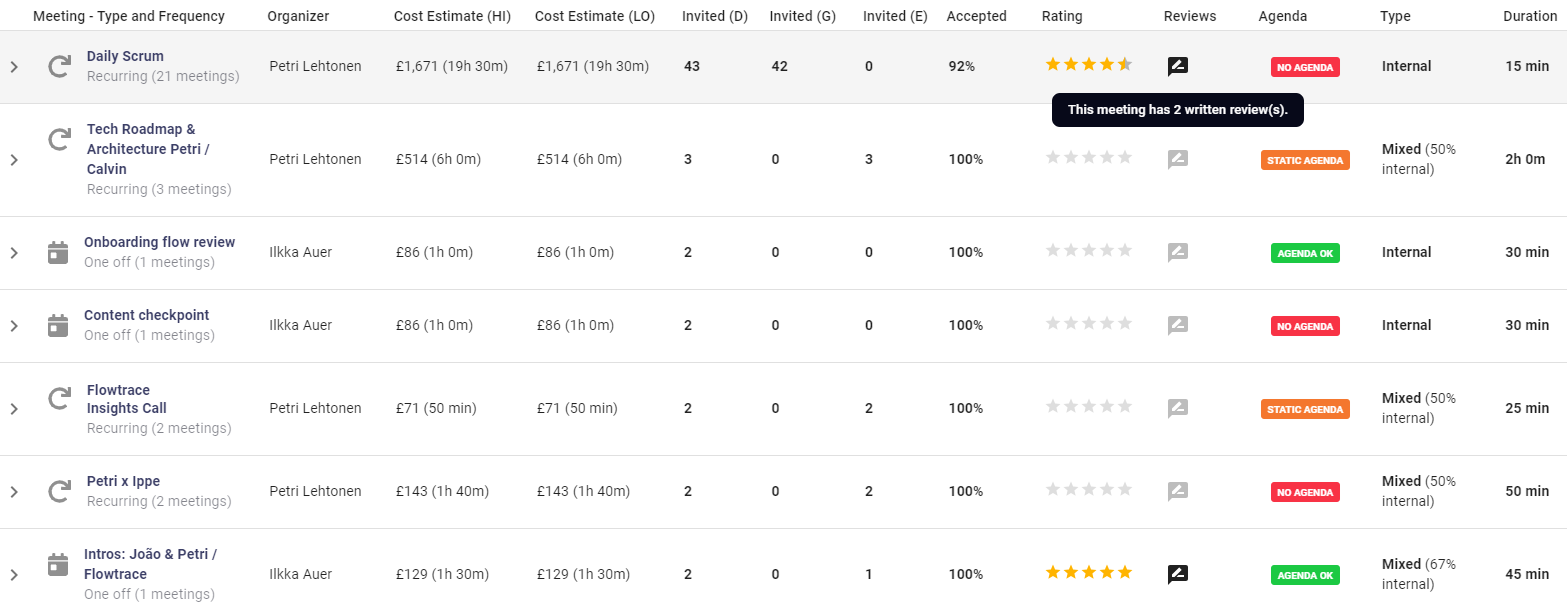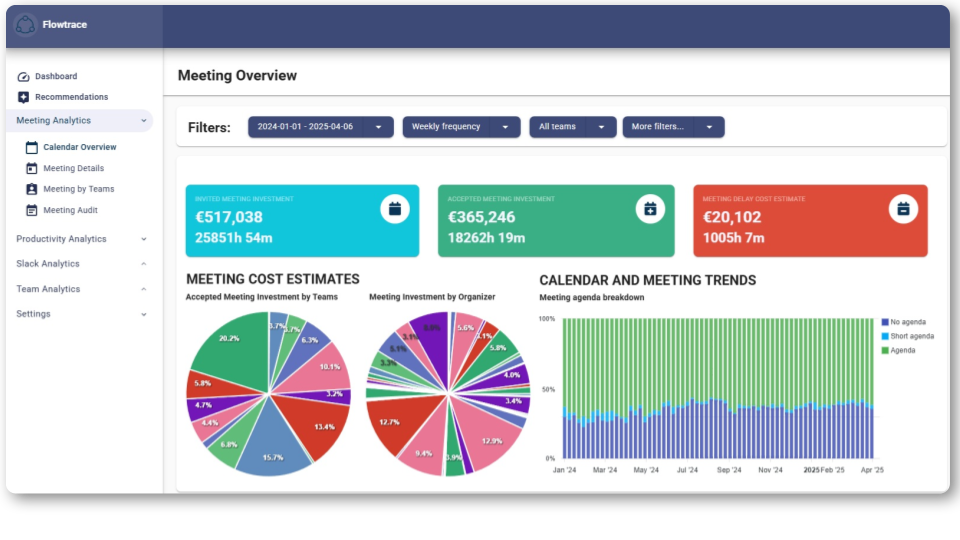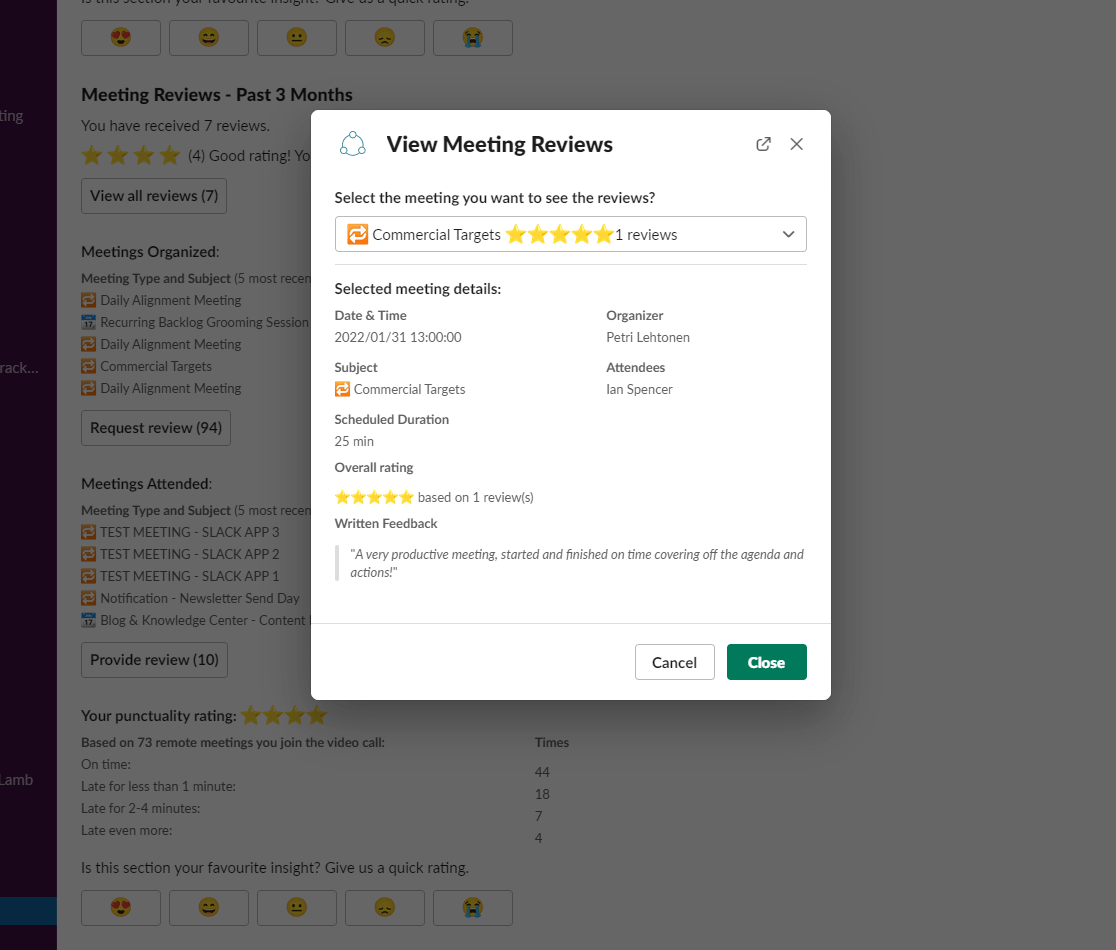Unproductive meetings don’t just waste time, they drain focus, morale, and momentum. Teams walk out without clear decisions, calendars stay clogged with recurring calls no one remembers setting up, and quiet frustration builds. Over time, these inefficiencies become normalized, quietly costing companies thousands of hours in lost productivity.
The problem isn’t just that there are too many meetings, it’s that most organizations never intentionally designed how they meet. Instead, meetings evolve organically. One sync leads to another, time slots stretch by default, and no one questions whether the format still fits the purpose.
That’s why transforming company meetings takes more than quick fixes. Shorter invites or better agendas help, but real change happens when you rethink your approach entirely. It’s a shift in mindset: from reactive scheduling to intentional collaboration.
This guide introduces a practical, four-phase approach to transforming how your company meets:
- Assess what’s happening now
- Define what good looks like
- Implement structured changes
- Sustain improvements through ongoing feedback and iteration
Whether you're looking to reduce meeting overload, improve decision-making, or just give people their time back, this process will help you move from scattered fixes to meaningful, lasting change.

Assess: Understand Your Current Meeting Landscape
Before you can fix your meetings, you need to fully understand what’s currently happening, and why. Too often, organizations try to improve meetings without a clear picture of how time is actually being spent or how employees feel about the current structure. The first step in any meaningful transformation is to assess objectively.

Audit Existing Practices
Start with a comprehensive review of your company’s meeting setup:
You’re looking for patterns, not exceptions. What’s typical, not just what’s problematic.
Gather Feedback
Quantitative data tells one story, but qualitative insight fills in the gaps. Use surveys or structured interviews to gather employee feedback:
- Which meetings feel valuable?
- Where do people feel their time is being wasted?
- Do team members feel comfortable declining invites or pushing back on unnecessary meetings?
- How does meeting load affect their ability to do focused work?
Make sure feedback is anonymous where possible to ensure honesty, and gather it from across levels, not just senior voices.
Analyze the Data
If you’re using a platform like Flowtrace, this is where your meeting analytics become invaluable. Look at:
Together, this data paints a clear picture of how meetings function today, and where the biggest issues are hiding.
According to Microsoft's 2023 Work Trend Index, the average employee spends 25% of their workweek in meetings, and a significant portion of that time is rated as unproductive or unnecessary.
If you’re spending a quarter of your week in meetings, it’s worth knowing if that time is driving progress, or just filling the calendar.
Define: Establish Clear Meeting Objectives and Guidelines
Once you understand the current state of your meetings, the next step is defining what “good” looks like. Without a shared framework for how meetings should run, even well-intentioned improvements will fall flat. Every organization needs clear meeting goals and protocols to support consistent, focused collaboration.

Set Purpose-Driven Goals
Not every meeting needs to be a deep-dive decision session, but every meeting does need a clear purpose. Define what different types of meetings should accomplish:
- Daily standups should unblock the day, not become planning sessions.
- Strategy reviews should end with alignment, not vague “next steps.”
- Status updates may not need to be live at all.
By clearly articulating what each meeting type is for, teams can stop defaulting to generic “catch-ups” and start using time more intentionally.
Develop Meeting Protocols
With goals defined, establish concrete rules to support them. This includes:
- Agendas required for all meetings longer than 15 minutes
- Default durations of 25 or 50 minutes to avoid bloated time blocks
- Participant roles clearly defined (owner, contributor, observer)
- No recurring meetings without review every quarter
These aren’t constraints, they’re guardrails that create focus and reduce waste.
Align with Organizational Values
Your meeting principles should reflect your broader culture. If your company values autonomy, lean toward async-first collaboration. If inclusivity is a priority, ensure everyone has a role, not just a seat in the room. When meeting norms align with your values, they’re far more likely to stick.
And the impact is real. Research from MIT Sloan found that companies that implemented structured meeting policies saw a 42% increase in team productivity, along with reclaimed time that could be reinvested in high-value work.
The bottom line: when everyone knows the purpose of meetings, and how they should run, it becomes much easier to make each one worth the time.
Implement: Apply Structured Changes to Meeting Practices
Once you’ve defined what better meetings should look like, the next step is turning those ideas into action. Transformation doesn’t happen through policy alone, it takes systems, tools, and habits that support the change at scale.
This is the stage where structured experimentation and practical implementation start to replace wishful thinking.

Leverage Technology
Technology should reinforce meeting best practices, not add to the complexity. Use tools that help teams:
- Set and share agendas automatically
- Track time spent in meetings and flag overruns
- Limit default durations and reduce passive invites
- Surface meeting cost estimates and prep requirements directly in the calendar
Platforms like Flowtrace enable these features directly within Google and Outlook, helping turn meeting policy into something operational, not optional.
Train Leaders and Participants
Even the best tools won’t work if no one knows how, or why, to use them. Run short internal workshops or training sessions that cover:
- How to facilitate focused, actionable meetings
- How to decide when a meeting is necessary
- Best practices for inclusive, efficient participation
- How to make async updates work without losing clarity
When both organizers and attendees know what’s expected, the bar for meetings rises across the board.
Pilot New Approaches
Before rolling out changes company-wide, test them in a single team, department, or project group. Use this as a proving ground to:
- Gather feedback from users
- Measure impact on time use and outcomes
- Refine tools and expectations before scaling
Starting small ensures adoption feels practical and responsive, not top-down or performative.
And it works. Companies that adopted real-time meeting cost tracking, combined with targeted changes in scheduling behavior, saw a significant drop in unnecessary meetings and improved operational efficiency, according to industry findings by HBR. The point isn’t to overhaul everything overnight, it’s to build the momentum of better habits that stick.
Sustain: Foster a Culture of Continuous Improvement
Transforming your company’s meetings isn’t a one-off project, it’s an ongoing process. Even with the right tools and protocols in place, success depends on your team’s ability to adapt, reflect, and keep improving over time.
This final phase is what turns short-term wins into long-term cultural change.

Regularly Review Meeting Effectiveness
Schedule periodic check-ins, monthly or quarterly, to evaluate how your new meeting practices are performing. Use both qualitative feedback and hard data to understand:
- Are meetings shorter and more focused?
- Are fewer people attending out of obligation?
- Is time being freed up for deeper work?
These reviews help ensure that changes are having the intended effect, and give you a chance to course-correct where they aren’t.
Encourage Feedback Loops
Give employees an easy, ongoing way to share how meetings are affecting their work. Whether through short surveys, post-meeting prompts, or dedicated Slack channels, continual input helps surface issues early and keep teams engaged in the process.
The more your people feel heard, the more likely they are to participate in meaningful change.
Adapt and Evolve
As teams grow, priorities shift, or work patterns change, your meeting strategies will need to evolve with them. What works for a 20-person startup might not work for a 200-person distributed team. Use feedback and analytics together to refine your approach without starting from scratch.
And the evidence supports this approach. Research shows that organizations treating meeting transformation as an ongoing process, not a one-time fix, are significantly more likely to sustain productivity gains and avoid slipping back into old habits. (McKinsey & Company, 2021)
Meeting transformation isn’t a destination—it’s a rhythm of continuous improvement.
Transform Your Company Meetings Today
Transforming company meetings isn’t about finding a quick fix, it’s about reshaping how your organization collaborates. When you take the time to assess your current meeting habits, define what effective meetings should look like, implement structured, practical changes, and sustain progress through regular feedback and iteration, you lay the groundwork for lasting impact.
The result isn’t just fewer meetings, it’s better ones. Meetings that have purpose. Meetings that respect people’s time. Meetings that lead to clear outcomes.
Every organization’s starting point is different, but the first step is always the same: decide that it’s time to take meeting performance seriously.
Now’s the time to make that shift,deliberately, systemically, and with your team’s time at the center.
